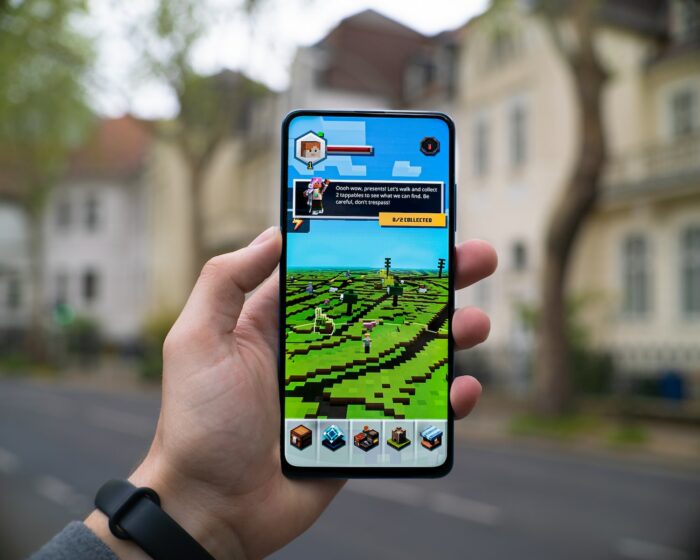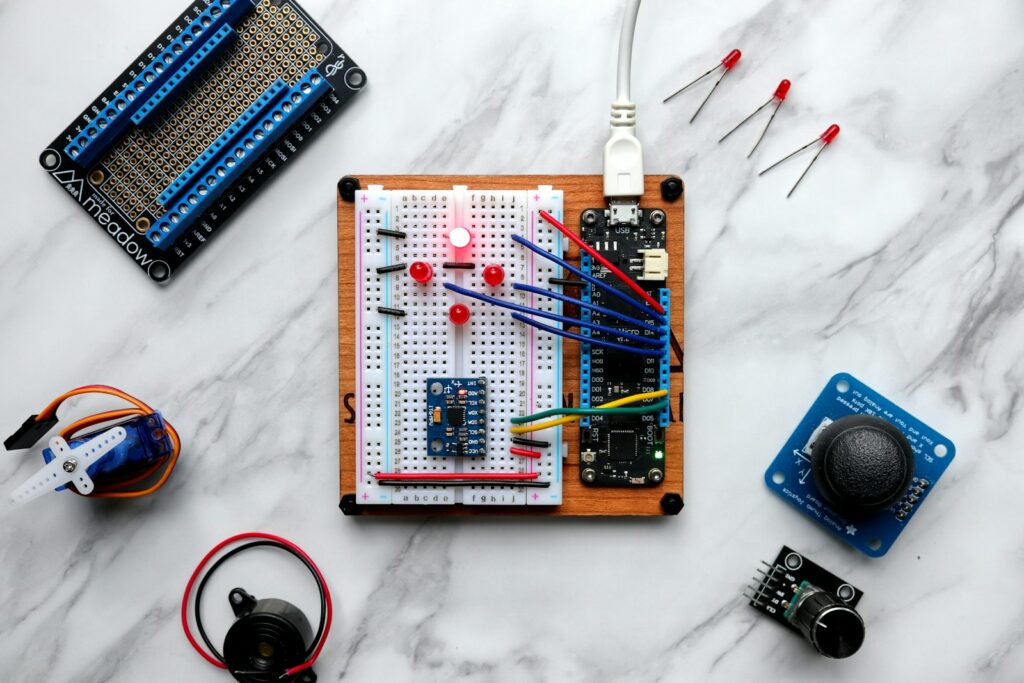The maker of the well-known augmented reality smartphone game Pokemon Go, Niantic, recently revealed plans to create its own AR headset. With this headset, which is still in development, users will be able to enjoy their beloved games and apps in a completely new way, revolutionizing the field of augmented reality.
We’ll be exploring every aspect of the upcoming Niantic AR headset in this piece, including its release date, cost, and features. This article is for you if you’re an avid gamer, a tech enthusiast, or just inquisitive about the future of augmented reality. Now let’s explore what Niantic has in store for us with their intriguing new augmented reality device.
Niantic Overview
American software developer Niantic has its main office in San Francisco, California. It was established in 2010 as a startup within Google, but in 2015 it was spun off to become a separate business. The augmented reality (AR) mobile games Niantic is most known for creating include Ingress, Pokémon Go, Harry Potter: Wizards Unite, and Catan: World Explorers.
The company’s most popular game, Pokémon Go, was introduced in July 2016 and quickly gained millions of gamers worldwide. The game creates a virtual world where users may capture Pokémon, engage in player battles, and gather things using real-world places and AR technologies. Due to Pokémon Go’s popularity, various augmented reality games were created, like Harry Potter: Wizards Unite, published in 2019 and based on the well-known Harry Potter series.
Niantic is at the forefront of the AR gaming sector, and players have benefited from the innovative uses of technology and collaborations with other organizations.
Niantic AR Headset Release Date
To create an augmented reality (AR) headgear for the metaverse, Niantic and Qualcomm have announced their collaboration. Snapdragon Spaces, a platform that allows developers to build immersive experiences, will work with the headset, which Qualcomm’s Snapdragon processors will power.
Niantic’s Lightship visual positioning technology (VPS), which enables precise positioning of virtual objects in the real world, is anticipated to be used by the AR headset. According to Niantic, Lightship VPS will be compatible with Snapdragon Spaces in 2024, enabling programmers to deploy the technology in various hardware and software.
The AR headset has yet to be given a precise release date, although it is anticipated to go on sale in 2024. The collaboration between Niantic and Qualcomm is expected to hasten the advancement of AR technologies and support the production of fresh, original metaverse experiences.
Niantic AR Headset Expected Pricing
Niantic still needs to provide pricing details for their augmented reality headgear. Yet, the headset will likely be reasonably priced compared to other AR gadgets on the market, given the company’s prior statements about aiming for an inexpensive price point. It’s crucial to remember that pricing details can alter as the release date draws near.
Since augmented reality technology has advanced significantly in recent years, many businesses are vying for market share. Niantic is entering the fray with their own augmented reality headset in response to Meta (previously Facebook) just introducing their high-end Meta Quest Pro headgear. Niantic intends to deliver a competitively priced gadget that is accessible to a large variety of consumers as one of the major ways to differentiate its headgear.
Although Niantic still needs to provide pricing details for their augmented reality headset, there have been suggestions that the product will be aimed at something other than the high-end consumer market. The emphasis will instead be on providing a reasonably priced gadget that may appeal to a wider spectrum of people. This may be a wise approach, given that many consumers have found it difficult to adopt AR technology due to the expensive cost of various headsets.
Balancing the headset’s price with the need for cutting-edge technology is one of the difficulties Niantic will confront in determining how much to charge for the headset. Powerful CPUs, advanced cameras, and other gear are needed for AR headsets, and their production can be costly. Consumers are also likely to spend less money on a product they believe to be experimental or specialized.
Niantic can also collaborate with other businesses to lower the headset’s price as another possibility. Collaborations with device producers, app creators, or even advertising looking to reach consumers in the metaverse may be required for this. Niantic could lower the price of its AR headset by splitting the development and marketing costs.
What Are Features We Already Know About
The tech community is buzzing about Niantic’s impending augmented reality headset, although nothing is known about its functionality. The headgear will, however, incorporate two important technologies: Lightship and Snapdragon AR2.
Lightship, a proprietary visual positioning system (VPS) from Niantic, allows augmented reality (AR) activities to be tied to certain real-world places. This technology has already been used to create rich, location-based experiences in Niantic’s well-known augmented reality games, including Harry Potter: Wizards Unite and Pokemon Go. Niantic offers consumers an even more seamless and immersive AR experience by integrating Lightship into their AR headset.
The second significant technology incorporated in Niantic’s AR headgear is Snapdragon, a family of CPUs developed by Qualcomm. Because of their well-known excellent performance and energy economy, Snapdragon processors are a good choice for powering AR and VR experiences.
The fact that Niantic chose to equip its AR headset with a Snapdragon AR2 CPU means that the device could easily handle difficult graphics and processing tasks, resulting in some amazing AR experiences. These processors were created specifically to run AR hardware.
Niantic Says Their AR Games Will Be Accurate To The Centimeter
A crucial part of Niantic’s future AR headset is the Lightship visual positioning system (VPS), which guarantees to provide consumers with extremely precise AR experiences. Lightship can recognize and track real-world objects and surfaces with high accuracy using computer vision and machine learning, allowing AR material to be overlaid with excellent precision.
Lightship’s capacity to create centimeter-accurate AR experiences is one of its main advantages. This level of precision is essential for highly immersive AR experiences that perfectly merge digital material with the real environment. Niantic’s usage of Lightship enables the development of highly interactive, user-responsive augmented reality (AR) games and applications that improve user engagement and enjoyment.
Lightship, for instance, can be used to precisely track the location of virtual items and creatures in the real world in games like Pokemon Go. As a result, users can engage with these virtual items more organically and intuitively, such as by tossing virtual pokeballs at an imaginary adversary as though it were present. Scavenger hunts, puzzles, and other challenges that depend on precise placement and tracking are just a few of the many possibilities this level of precision opens up for AR games and experiences.
A potent tool for producing precise and engaging AR experiences is Niantic’s Lightship VPS. Users may anticipate seeing much more sophisticated AR content that is very engaging and immersive with the impending release of their AR headset.
Final Verdict On Niantic AR
Niantic’s AR headsets are eagerly awaited and are predicted to be a significant player in the expanding AR sector. Niantic wants to provide a consumer-focused headset that is competitively priced while still offering extremely accurate and realistic augmented reality (AR) experiences thanks to its patented Lightship visual positioning algorithm and compatibility with Snapdragon Spaces.
The possibility of a strong and affordable AR headset from a major operator like Niantic, which will most likely come at a fair price point, is great news for enthusiasts of the technology, even though exact details on capabilities and pricing are still lacking.
It’s important to note that Niantic has built a solid foundation of knowledge and experience in the AR market through its past with AR games like Pokemon Go and Ingress. Niantic has the opportunity to develop a headgear that offers distinctive and cutting-edge AR experiences by utilizing its expertise and technology.
Furthermore, Niantic’s emphasis on developing centimeter-accurate augmented reality (AR) experiences utilizing their Lightship technology may create new opportunities for AR applications in industries like education, training, and navigation.
Yet it still needs to be determined how Niantic’s augmented reality headgear will stack up against rivals like Magic Leap and Meta. Companies are spending a lot of money creating cutting-edge technology and offering very immersive AR experiences in a struggle to rule the AR market.
The price, feature set, and user uptake of Niantic’s AR headset will ultimately determine its success. Yet, for those interested in the future of AR technology, the possibility of a high-quality and affordable Niantic AR headset is undoubtedly interesting.




















